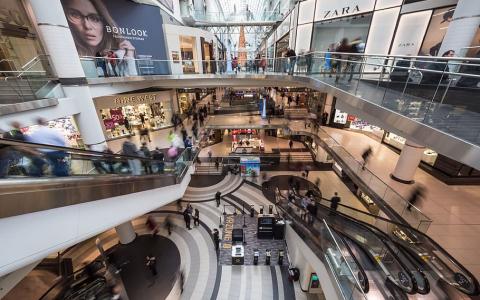
Vaccinations are still months away and many households are more interested in stockpiling essentials than buying luxuries. Everything depends on avoiding a 2008-style consumer collapse.
Retail sales are the backbone of the economy with over $1 trillion changing hands in the last two months of the year. The trend almost always points up.
Exceptions are limited and extremely serious. September 2001 produced a slight dip in consumer activity. The 2008-9 crash was a lot more extensive.
Now Wall Street is braced to see whether the COVID holiday will be another of those dismal seasons. As usual, we hope for the best while planning for the worst.
Can’t Cancel Thanksgiving
With the virus spreading at will across the country, millions of people are going to be on the road this week despite CDC pleas for a soft travel ban.
Airlines have strict mask requirements and many airports now offer on-site COVID testing to catch hot spots fast. But once the planes hit the ground, odds are good the virus will circulate in stores and across holiday tables.
After that, a 14-day incubation period takes us to December 10 before we see just how many people get sick. It could be a few, it could be a lot or at nearly 200,000 new cases a day now, it could simply be business as usual.
Either way, I doubt Black Friday will be all about a trip to the shopping center. People might spend a lot on gifts this season, but holiday fever was already moving online before the pandemic started.
Online ordering has come into its own now. Non-store sales are up 47% from 2018 and if the trend continues Amazon and its counterparts will have a 20% better year than they did in 2019.
More Rotation Than Retail Crash
That’s enough to keep the overall numbers moving in the right direction, even if it comes at the continued expense of the shopping center.
Department stores were suffering anyway. Another bad season only hastens their long-predicted evolution or demise.
And categories that rely on face-to-face transactions never really recovered from the initial COVID lockdowns. People still aren’t buying as many clothes or as much makeup as they did a year ago.
Restaurants and bars will remain depressed until local curfews lift. It’s going to be a cold season for festive meals outside the home.
But there’s always delivery and old-fashioned comfort cooking. Grocery sales spiked in March and while the hoarding has calmed down a little, a lot of people are still stockpiling household staples in case supply chokes again.
None of this points toward a 2008-style consumption crash. Belts haven’t tightened across the country as a whole, even with a net 10 million people out of work since February.
These people are paying the bills somehow. Whether it’s savings, expanded unemployment benefits or community support, the pain hasn’t surfaced yet.
If it does, we all hope Congress will cover the gap. Realistically, that’s after the holidays. Right now, there’s enough cash flowing to support record retail activity across a lot of categories.
Remember, a lot of households have paid down their credit cards and many are still anxious about carrying a balance. Those emergency funds are there to cover emergencies, and if Congress wants to incentivize repayment, that can go in any stimulus package that comes.
Category Clarity
Does it feel festive? Not really. A lot of normal “gifting” is already front loaded as bored people stuck at home indulge themselves.
The experience economy remains shut down. Forget about concerts and movie tickets. Hotels are going to be colder than usual going into the New Year.
They aren’t dead in the water. They just aren’t doing great. People are supporting them this year by buying gift cards, which is pure profit until lockdowns end.
Stores, on the other hand, are hiring roughly as many seasonal workers as they did last year. Shelves still need stocked even if an in-house shopper is going to pick the merchandise and put it in a curbside bag.
And of course Amazon has already staffed up to cover what’s become normal online activity, so those numbers aren’t going to change much.
This is the first year of the new normal. The home has becoming the store for years now. We're only seeing that trend accelerate here.
One day in-store browsing may come back. But the gift economy goes on.



